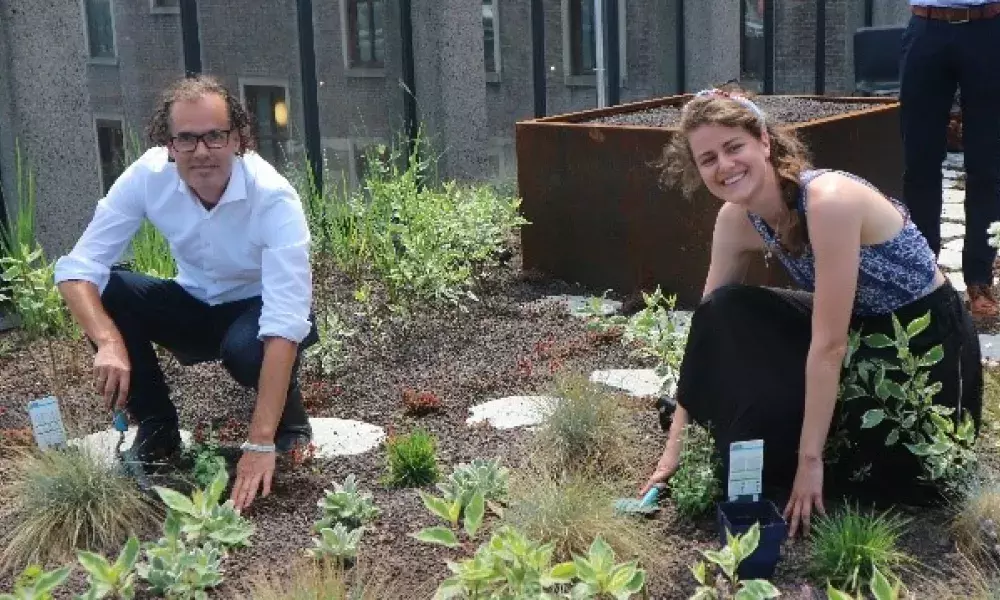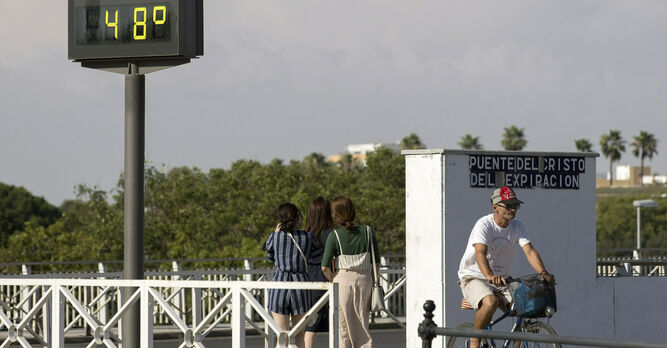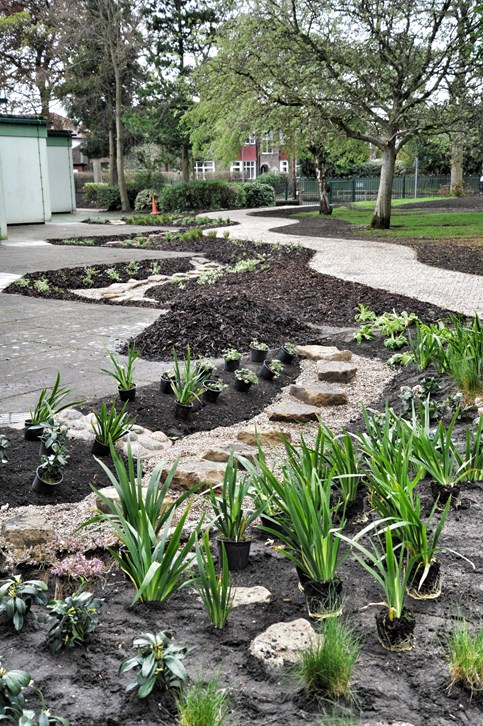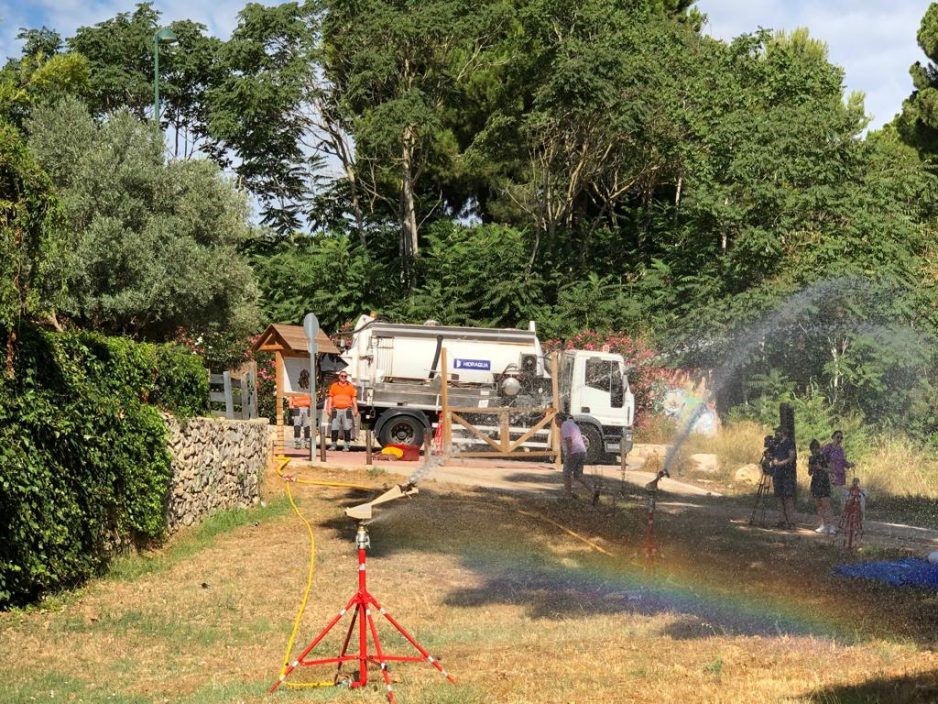
In light of the agreements reached at COP26, having taken place earlier this month, cities have proven to be key actors in the fight against climate change. Local city governments are indeed acting up and delivering emission-cutting projects and goals. Similarly, UIA cities have further prioritised the need to act and address climate change through adaptation and mitigation innovative solutions. This includes nature-based solutions, grey, green and blue infrastructures, construction solutions and smart cities approaches.
Why climate adaption matters for cities
Climate change is one of the most significant threats to urban life. Conversely, cities are major contributors to climate change yet also serve as an integral part of tackling this problem. As a result, for several years, there has been a growing widespread behavior change to climate adaptation in Europe. Considering that climate change is one the most serious urban challenges that European cities are facing today, the EU has committed to delivering the ambitious goals of the Paris agreement and the European Green Deal. In this regard, cities, being the most exposed, are increasingly recognising the critical need to respond to climate change. UIA cities in particular, have been identifying the most important adaptation priorities, including areas of environmental and social vulnerabilities as well as governance issues. Hence, it is only through an integrated and participatory approach that cities can take action and fight climate change.
UIA cities implementing adaptation solutions
Since 2018, UIA has been funding 6 European cities, Amsterdam, Barcelona, Greater Manchester, Paris, Riba-roja de Tùria and Seville to implement innovative projects and adapt to climate change for a total of € 26.7 M ERDF. Currently, these projects are collecting final and interesting results to prepare the transfer of their experience as they enter their final stage of the implementation phase. These projects give an overview of the following crosscutting issues that urban authorities deal with when facing climate change related challenges.
Benefitting from ecosystem services
With the aim of capitalising on nature’s ecosystem services, cities are leading the development of green and blue infrastructures in order to mitigate, manage and prevent the detrimental impacts of extreme weather conditions.
Heat, flooding, water scarcity and droughts are the main environmental vulnerabilities that cities are struggling to overcome today. Consequently, cities tend to experience great ramifications on the economy, housing, transport, citizens’ physical and mental health. For example, in Amsterdam, the RESILIO project addresses the issue of floods due to heavy rainfall and increased droughts throughout the year. Through the implementation of smart blue and green roofs, this project is targeting water supply, energy consumption, heat and urban livability challenges caused by climate change. In order to reduce heavy rainfall, these roofs have installed a “smart flow control” that helps anticipate the weather forecast and as a result, regulate the rooftop water levels. Simultaneously, this approach helps increase biodiversity and improve citizens’ quality of life as shown in this latest analysis on citizen participation in the RESILIO project written by UIA expert Leon Kapetas.
Being the largest city in Southern Spain, Seville experiences very high temperatures, which have a direct impact on the city’s economic development, urban planning and most importantly, citizens’ health. The CartujaQanat project is adapting the local economic structures to the negative consequences of climate change. It focuses on the reconstruction of streets, squares and buildings and introduces a combination of different natural and technological solutions including expanding the new ecosystem throughout the city. The developments encompass the refreshing of facilities, an underground gallery and a bioclimatic amphitheater. At the same time, the project aims to build a strong cooperation scheme as well as increase and diversify skills in the green economy that is further detailed in this analysis on the implementation of the project written by UIA expert Konstantina Karidy.

Targeting vulnerable groups
The impacts of climate change are felt mostly among the most vulnerable social groups, targeting especially the young and elderly. With the objective of improving children and citizens’ quality of life, UIA cities are raising climate change awareness and engaging with the most vulnerable communities and neighborhoods.
In Barcelona, there are 1.6 million inhabitants affected by the hot and humid climate in the summer due to UHIs. The GBG_AS2C project, in this regard, aims to adapt schools to climate change. Have a look at how the city developed performance indicators; tools for environmental and climate adaptation measures. Such measures include transforming school playgrounds into climate shelters and remaining open for the public when off the academic calendar. In order to combat the heat and target social vulnerability, green, grey and blue infrastructures will be implemented. In return, this will highly improve the children and citizens’ quality of life, refresh urban metabolism and lastly, ensure public and livable spaces in all neighborhoods.

Another city striving to become a more climate resilient-city and targeting vulnerable groups is Paris. The OASIS project is addressing the inevitable challenge of mitigating extreme heatwaves, further exacerbated by the increase of Urban Heat Islands (UHI). This issue has resulted in thousands of deaths and has affected the most vulnerable of groups. It is therefore crucial that the dense city of Paris uses and manages facilities from a smart and innovative approach. Hence, this is where the OASIS project has stepped in to transform 10 schoolyards into cool, fertile islands. This method comprises of innovative technical solutions such as rainwater recovery systems, nature-based solutions (NBS) to risks, water games and fountains. Additionally, the project integrated a participatory approach that includes a co-implementation stage of involving students and the local community in converting schoolyards. Check out how this translate in practice by reading the latest publication of UIA expert Maria Sitzoglou.
Developing cooperation schemes
Due to the complexity and diversity of climate change challenges, municipalities aim to develop collaborative mechanisms and involve a large scale of stakeholder partnerships in order to target urban issues in an integrated way.
It is important to recognise that climate change is a systemic challenge that requires integrated and participatory approaches to governance challenges. Most of our related projects in this case, focus on comprehensive collaborative schemes and mechanisms to capitalise on multi-stakeholder and multi-level partnerships. The city of Manchester, for example, is developing a set of mechanisms to fund, deliver and maintain green infrastructure and NBS projects to increase investors’ confidence in making such investments. The associated project, IGNITION, aims to increase the cities’ urban green infrastructure needed to achieve climate resilience. Listen to this podcast on how the project is going beyond conventional approaches and finds innovative options for local authorities to boost NBS and green spaces.

The urban areas of Riba-roja de Tùria shares a wildland zone that is experiencing a growing exposure and risk of forest fires because of climate change. Over the past years, the fires have become more frequent and thus, more harmful to the growing urban population. To deliver technical and innovative solutions to these challenges, the municipalities have built a strong governance partnership scheme to protect the forest and build fire resilience. Accordingly, this helps the GUARDIAN project implement a hydraulic infrastructure in order to supply recycled water between the two Natural Parks in addition to creating a defensive barrier made up of irrigation and sprinklers. More hands-on experience on forest management works is described in this latest interview of UIA expert Elsa Pastor with Ferran Dalmau, a forestry engineer with MSc on Wildland Fire Science and Integrative Management.

More insights and inspiration?
- Explore the climate adaptation topic page to gain more insights on the challenges cities face and the solutions proposed for climate change adaptation.
- Dig deeper and explore the UIA knowledge Lab where you can find journals, articles and other resources on how cities are accelerating to become climate-resilient and well-adapted cities.
- Stay tuned for upcoming events and news as we are currently working with the above cities to organise a dedicated event in 2022 in order to share the findings and results of their projects.
Further useful reading
- Striving towards a greener Europe - Climate adaptation and energy transition driving change in urban areas (Marcelline Bonneau, 2021)
- Latest publications on Climate Adaption of the Urban Agenda for the EU
- Latest EEA publications on Europe’s environment and climate change
- Explore the climate adaptation topic page to gain more insights on the challenges cities face and the solutions proposed for climate change adaptation.
- Dig deeper and explore the UIA knowledge Lab where you can find journals, articles and other resources on how cities are accelerating to become climate-resilient and well-adapted cities.
- Stay tuned for upcoming events and news as we are currently working with the above cities to organise a dedicated event in 2022 in order to share the findings and results of their projects.
Further useful reading
- Striving towards a greener Europe - Climate adaptation and energy transition driving change in urban areas (Marcelline Bonneau, 2021)
- Latest publications on Climate Adaption of the Urban Agenda for the EU
- Latest EEA publications on Europe’s environment and climate change
About this resource
The Urban Innovative Actions (UIA) is a European Union initiative that provided funding to urban areas across Europe to test new and unproven solutions to urban challenges. The initiative had a total ERDF budget of €372 million for 2014-2020.
Similar content




